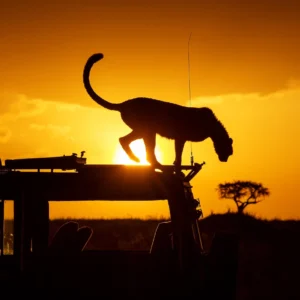Introduction – When Food Meets the Mountains
A Himachal Luxury Holiday is more than just mountains and mist — it’s a celebration of flavor, tradition, and warm hospitality. From heritage feasts in Shimla to riverside gourmet dinners in Manali, this 6-night journey through the hills is designed for travelers who want to taste Himachal as deeply as they explore it.
For the luxury traveler, exploring Himachal isn’t just about scenic drives and spa retreats. It’s about dining where the mountains themselves influence the flavors — slow-cooked stews that warm your soul on chilly evenings, breads steamed over wood fires, and desserts made with orchard-fresh fruit picked that very morning.
The 6 Nights Himachal Luxury Holiday Tour becomes even more special when viewed through a foodie’s lens. Each day unveils a new flavor, a new story, and a new way to connect with the land and its people. This guide is a feast in words — pairing each destination with its signature dishes, uncovering the heritage of its recipes, and introducing you to the artisans and chefs who keep these traditions alive.
Day-by-Day Culinary Journey
Day 1 – Arrival in Shimla: Colonial Flavors & Mountain Warmth
Historical Flavors:
Shimla’s culinary heritage is a blend of British colonial refinement and hearty Himachali home cooking. During the British Raj, elite officers brought along their bakers, butchers, and chefs, leading to a thriving food culture that mixed pies, roasts, and puddings with local lentil curries and stuffed breads.
Morning in Shimla:
Breakfast at Wildflower Hall isn’t just a meal — it’s an experience. Executive Chef Arun, who’s been with the property for over a decade, explains:
“We try to use as much local produce as possible. Our siddu is made with wheat grown in Solan, and the walnuts are from the Kinnaur valley. Even our butter comes from a cooperative dairy just outside Shimla.”
Siddu, a steamed bread stuffed with poppy seeds and walnuts, is a slow food in the truest sense. The dough ferments for hours, giving it a mild tang, before being steamed to pillowy softness and served with melting ghee.
Lunchtime Luxury:
At Oberoi Cecil, the menu often features chana madra — a Chamba specialty of chickpeas in a yogurt-based sauce. Yogurt is whisked with gram flour to prevent curdling, then slowly cooked with cloves, cardamom, and cinnamon until it thickens into a silky gravy. The secret, says Chef Meena, is “patience and constant stirring — this dish can’t be rushed.”
Evening Tea Rituals:
As the sun dips, stroll along Mall Road to Café Simla Times for Kangra green tea and carrot cake. The tea’s light, floral aroma is said to come from the region’s unique soil and climate.
Dinner Recommendation:
End the day at Eighteen71, where roast lamb meets pahadi spices. The chef uses a dry rub of cumin, coriander, and fennel before slow-roasting the meat, infusing it with smoky, earthy notes.
Day 2 – Kufri & Mashobra: Rustic Mountain Comfort
The Orchard Connection:
Mashobra is surrounded by apple orchards planted during the colonial period. Apples are not just eaten fresh — they’re baked into pies, turned into cider, or cooked into savory chutneys that accompany meats.
Breakfast:
Aloo palda, a yogurt-based potato curry, makes an appearance here too, but with subtle regional tweaks — the potatoes are cooked with methi seeds for a nutty bitterness, balancing the tang of the yogurt.
Lunchtime in the Fields:
One of the most memorable dining experiences is a picnic in the middle of an orchard. Locally baked kulcha bread is paired with Himachali cheese from nearby dairies, apple slices drizzled with wildflower honey, and a chilled glass of handcrafted apple cider.
Dinner – The Dham Feast:
At your luxury resort, request a traditional Dham. This ceremonial vegetarian meal is prepared by botis — hereditary cooks trained in the art of Himachali feasts. Dham dishes are cooked without onion or garlic, relying instead on aromatic spices, slow cooking, and balance. A typical spread includes madra, boor ki kari, maah daal, sepu badi (lentil dumplings in spinach gravy), and ends with meetha bhatt (sweet rice).
Day 3 – Manali: From Street Momos to Himalayan Trout
Manali’s Dual Identity:
Here, tradition blends with global flavors, thanks to decades of international backpackers and adventure seekers. You’ll find traditional Himachali fare alongside Israeli shakshuka and German apple strudel.
Breakfast:
Babru — crispy wheat puris stuffed with black gram paste — is served hot with tamarind chutney.
Lunch at Johnson’s Café:
This iconic restaurant has made Himalayan trout famous. The fish is sourced fresh from river farms in Patlikuhal, marinated in lemon, salt, and fresh herbs, and grilled over charcoal. Chef Rajiv shares:
“The key is freshness — we get our trout delivered within two hours of being caught.”
Street Food Stop:
Old Manali’s momo stalls steam dumplings filled with cabbage, carrot, and minced meat. The accompanying chili chutney is fiery — made with bhut jolokia and local tomatoes.
Dinner:
At Span Resort, a riverside table under fairy lights is set with sidu, roast vegetables with Himalayan herbs, and locally brewed apple cider.
Day 4 – Kullu Valley: Orchard Freshness & Village Kitchens
Breakfast:
Kullu’s apple pie is legendary — flaky pastry with apple filling scented with cinnamon and nutmeg, served with cream from local cows.
Village Lunch:
An immersive experience where you sit cross-legged in a wooden kitchen, watching sidu being steamed over a tandoor while lamb curry simmers in a clay pot. The lamb is marinated overnight in yogurt, ginger, and garlic, then slow-cooked with coriander and fennel seeds.
Dinner:
Sweet saffron rice (mittha) finishes the day — a dish served during weddings and festivals. The rice is cooked with ghee, sugar, and saffron threads, then sprinkled with almonds and raisins.
Day 5 – Dharamshala & McLeod Ganj: Tibetan & Himachali Fusion
Breakfast:
Tibetan butter tea, made with tea leaves, yak butter, and salt, is an acquired taste but deeply warming. Paired with tingmo, a steamed bread, it’s perfect for chilly mornings.
Lunch at Norling:
The thenthuk here — a hand-pulled noodle soup — is flavored with mountain herbs and vegetables from the owner’s own garden.
Evening Snack:
At Illiterati Café, the walnut cake is dense, nutty, and just sweet enough, served with herbal tea while you gaze at the Dhauladhar range.
Dinner at Chonor House:
Grilled vegetables with yak cheese, followed by mushroom soup, and an apricot tart made with fruit from the Kangra valley.
Day 6 – Palampur: Tea Gardens & Tranquil Dining
Breakfast:
Fresh cow’s milk yogurt with walnuts and honey is a simple yet luxurious start to the day.
Tea Experience:
Visit Wah Tea Estate for a curated tasting of white, green, and oolong teas, each paired with a snack designed to complement its flavor profile.
Dinner:
A farewell menu at a luxury eco-resort might include madra paired with saffron pulao, lamb cooked in mustard oil, and a dessert platter of apple crumble, mittha, and chocolate truffles infused with Kangra tea.
The Heart of Himachali Cuisine
The roots of Himachali cuisine run deep. Historically, harsh winters meant preserving grains and pulses for months, and festivals became occasions for elaborate cooking. Ingredients are local, seasonal, and often organic by default.
Signature Ingredients:
-
Kidney beans (rajma) from Chamba
-
Red rice from Kangra
-
Apples from Kinnaur
-
Walnuts from Kullu
-
Herbs like mint, coriander, and timur (Himalayan pepper)
Cooking methods favor slow simmering in heavy-bottomed pots, allowing flavors to deepen naturally.
Luxury Dining Experiences
From heritage hotels to riverside resorts, luxury dining in Himachal is as much about location as it is about flavor. The best experiences combine locally sourced produce, traditional recipes, and modern presentation.
Street Food & Hidden Gems
Some of the best bites are from humble stalls — like chana kulcha at Shimla’s lower bazaar or fried bread from a nameless dhaba in Kullu. These places are often family-run, passing recipes down for generations.
Beverages of Himachal
-
Chulli Wine: A lightly fermented drink made from apricots and apples.
-
Kangra Tea: Famous for its delicate flavor and aroma.
-
Local Apple Cider: Crisp and refreshing, often produced in small batches.
Practical Tips for the Foodie Traveler
-
Sample small portions so you can try more dishes.
-
Ask for seasonal specials — many dishes are only made at certain times of year.
-
Visit local markets to see the produce before it hits your plate.
Conclusion – More Than a Meal
A 6 Nights Himachal Luxury Holiday Tour is a journey for all senses, but for the foodie traveler, it becomes a feast of discovery. Every plate tells a story — of mountain farmers, orchard keepers, village cooks, and passionate chefs. With Adotrip, each of these stories is woven into your travel experience, ensuring that you leave not just with photographs, but with flavors that linger long after you’ve returned home.
Read More: Andaman Family Tour Packages: Must-Have Essentials for Your Trip








